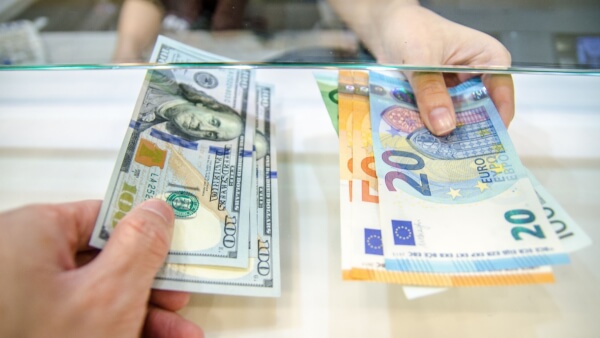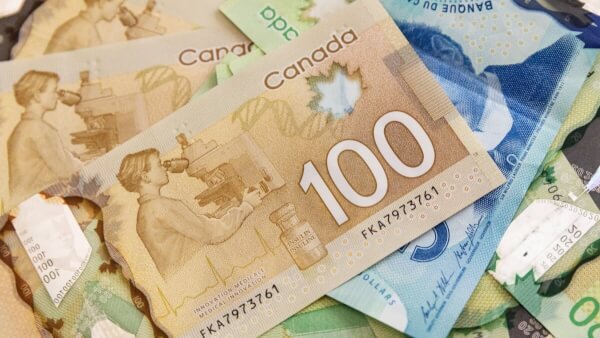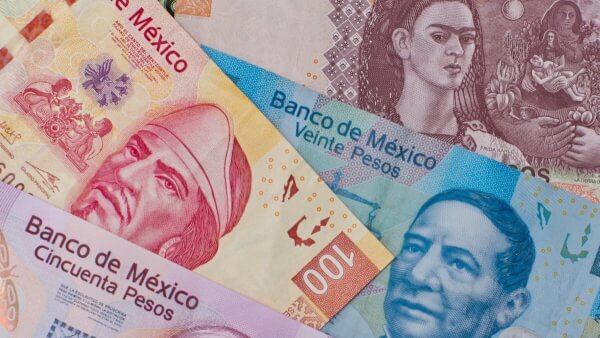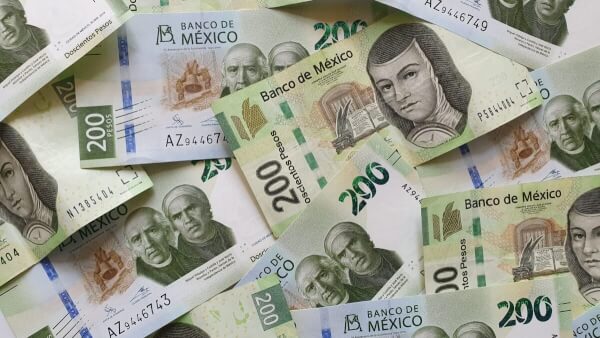What is the best place to exchange currency?
Going abroad and in need of foreign currency? In this article, we'll explore where to exchange currency - from good deals to the places you should avoid.

If you’re planning a trip abroad, it’s a smart move to check the international ATM withdrawal fee that applies to your preferred bank card before you travel.
That way you’ll know what you’re paying when you get foreign currency cash for overseas spending.
As well as an upfront fee to get your money from an ATM, you may pay an ATM withdrawal foreign transaction fee — a percentage charge — and a cost added by the ATM operator. This can make it pretty pricey overall.
Use this guide to cut the costs of international ATM withdrawals — plus we’ll introduce Wise and the Wise Multi-Currency Card as cheap ways to manage your money in foreign currencies.
There are very few bank accounts with no international ATM fees — and the chances are that, if you find a traditional account which has no overseas fees, you’ll need to pay a maintenance charge monthly to access the benefit.
This means that most people using a regular bank card to make foreign currency withdrawals at an ATM will pay one or more fees.
The costs do vary a bit depending on the specific bank and card — but can include:
It’s a pretty long list of potential costs — so understanding the specific charges applied to your own card in advance can avoid nasty surprises when you should be enjoying your trip.
Read your own card’s terms and conditions carefully — or check out alternatives, like the Wise Account and Wise Multi-Currency Card, which can offer lower fees for international withdrawals.
Open a Wise Account online or in the Wise app, to hold and exchange 50+ currencies, with the mid-market rate and low fees from 0.41%¹.
Wise won’t charge a fee for the first two ATM withdrawals each month if the total combined withdrawal amount does not exceed $100. After $100 is withdrawn in a month, any amount in excess will be charged a 2% fee.
After your first 2 withdrawals, there's a $1.50 charge per withdrawal. The ATM operator may charge their own fees
| Check out these other handy Wise personal account features: |
|---|
|
You can’t usually avoid international ATM fees entirely, but you can work out ways to cut down the costs, so your money goes further when you’re overseas. Here are a few ideas.
A multi-currency account from a specialist provider like Wise can make it cheaper to withdraw at ATMs as you can exchange USD to the currency you need in advance, and often with lower fees compared to your bank.
Plus, you can plan your budget and switch when the rates are good, so you know what you have to spend.
You may be asked if you’d rather pay in dollars or the local currency wherever you are. Always choose to pay in the local currency for the lowest overall costs.
This is an example of DCC (Dynamic Currency Conversion), where the merchant chooses the exchange rate and fees if you pay in dollars — well worth avoiding.
If you’re using your bank card overseas, check if your normal bank has any partnerships with local banks in your destination.
This can sometimes be an option, and may mean you pay lower fees for ATM withdrawals if you use a partner bank’s ATM.
As there’s usually both a withdrawal fee (from your bank, and maybe from the ATM operator too), plus a percentage fee to pay when withdrawing money overseas, making fewer withdrawals of a higher value can work out cheaper than making many small withdrawals.
Finally, watch out for fees added by the ATM operator — these are usually shown on screen, so you can walk away if you’re unhappy with them.
Simply cancel the transaction before you confirm it, and find another ATM if you need to.
To illustrate the typical international ATM fees you’ll face, let’s look at the costs associated with using your US bank card overseas, with some of our major banks.
| Bank | ATM fees | Foreign transaction fee | Exchange rate |
|---|---|---|---|
| Bank of America®² | No fee from Bank of America ATMs 5 USD international fee elsewhere | 3% | Rate set by card network — Visa® or Mastercard® for example |
| Wells Fargo®³ | 5 USD international fee | 3% | Rate set by card network — Visa or Mastercard for example |
| Chase®⁴ | 5 USD international fee | 3% | Rate set by card network — Visa or Mastercard for example |
| PNC®⁵ | 3 USD — 5 USD international fee for most accounts (fee may be waived or reimbursed on Performance Checking Accounts) | Varies by card | PNC exchange rate |
So — given the typical costs, there is one obvious question: what banks have no international ATM fees?
A few of the major US traditional banks do have limited options to have international ATM fees waived. Bank of America, for example, has partner banks across some countries, where no fees apply⁶.
However, the range is limited, which means not all countries are covered, and there’s a maximum of one banking brand per country with no fees.
Check out the options if you’re headed to Europe, Australia, New Zealand, the Caribbean, Canada or a few Latin and South American countries.
PNC similarly has some options to waive fees — but you need a Performance checking account, which has a monthly fee of 15 USD to operate.
That might mean it’s not worthwhile if the amount you save doesn’t cover the maintenance fee.
Most bank debit cards have a foreign transaction fee of around 3% which applies every time you use your card to spend in foreign currencies.
Double check the terms and conditions of your specific account — and if you can’t avoid foreign transaction fees with your regular bank, you might prefer to choose a specialist account from a provider like Wise instead, which can come with lower costs for international card spending.
Use this international ATM fee guide to get prepared for your trip overseas — and don’t forget to check out Wise and the Wise Multi-Currency Card, for cheaper ways to manage your money across currencies.
Sources checked on 05.10.2023
*Please see terms of use and product availability for your region or visit Wise fees and pricing for the most up to date pricing and fee information.
This publication is provided for general information purposes and does not constitute legal, tax or other professional advice from Wise Payments Limited or its subsidiaries and its affiliates, and it is not intended as a substitute for obtaining advice from a financial advisor or any other professional.
We make no representations, warranties or guarantees, whether expressed or implied, that the content in the publication is accurate, complete or up to date.

Going abroad and in need of foreign currency? In this article, we'll explore where to exchange currency - from good deals to the places you should avoid.

You're all set for your trip abroad, and the question comes up: where can I exchange foreign currency? In this article, we'll go through all the options & tips.

Heading abroad? Here’s everything you need to know about ordering Canadian dollars in the US.

Heading abroad? Here’s everything you need to know about ordering pesos with Chase bank.

Heading abroad? Here’s everything you need to know about ordering pesos with Wells Fargo.

Heading abroad? Here’s everything you need to know about ordering euros with Bank of America.